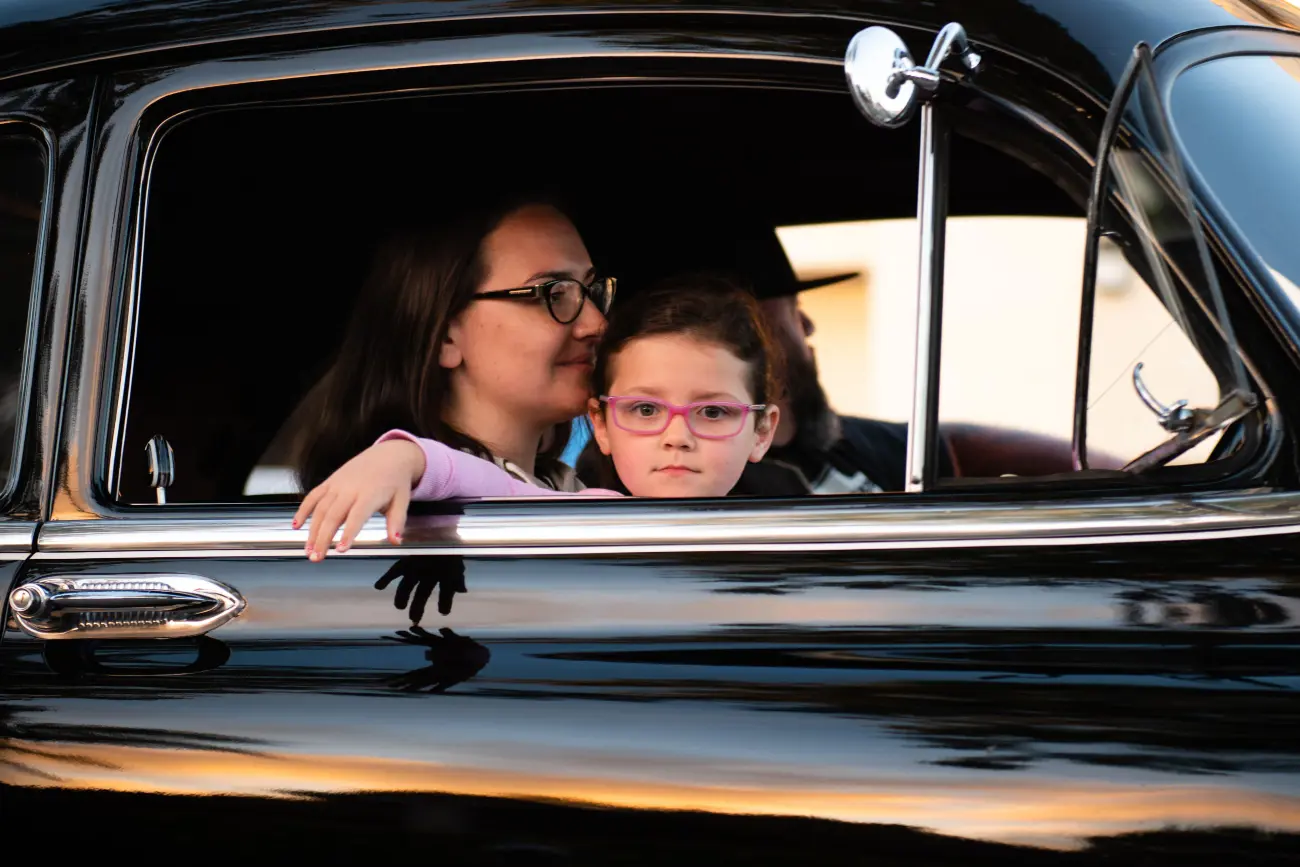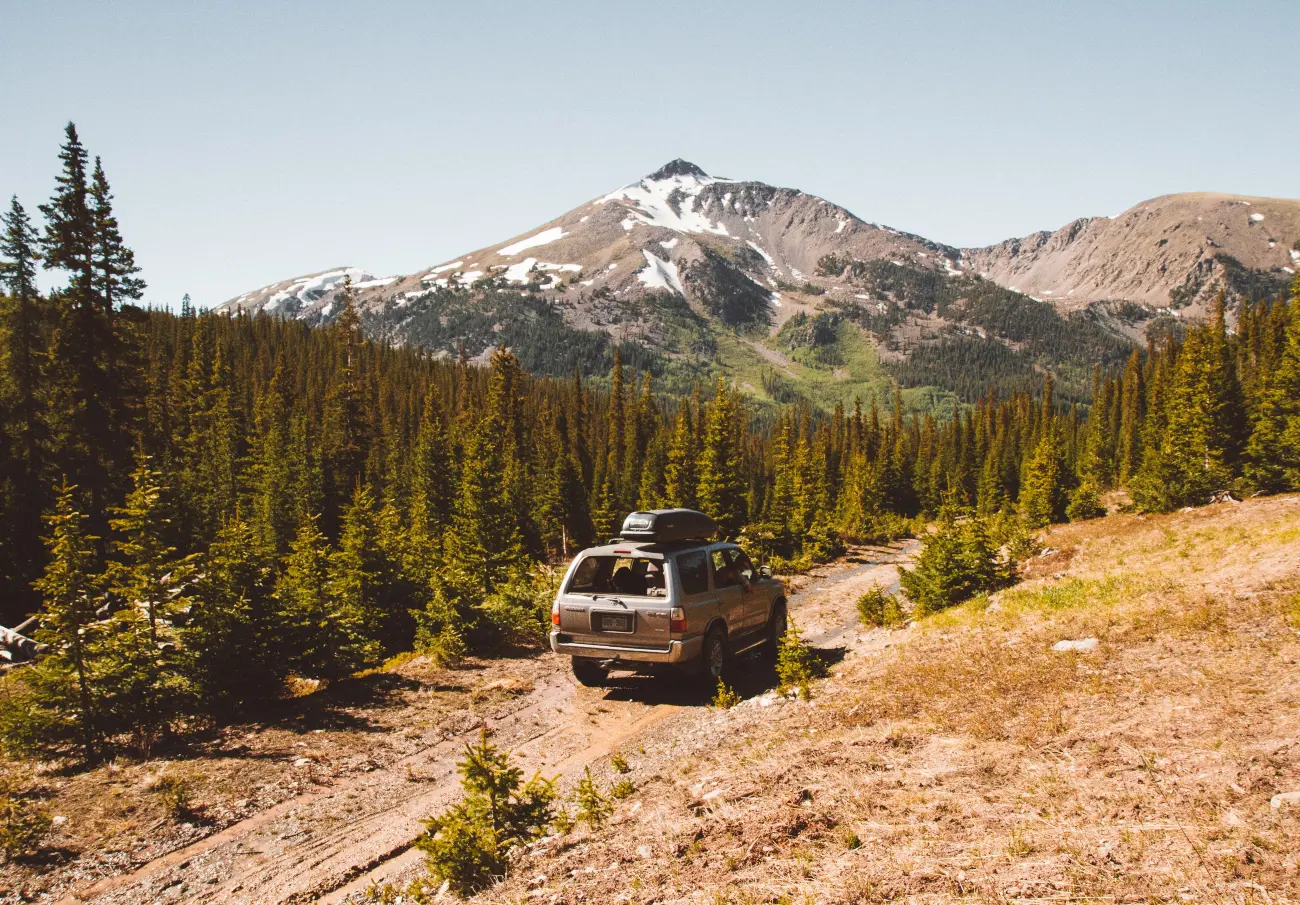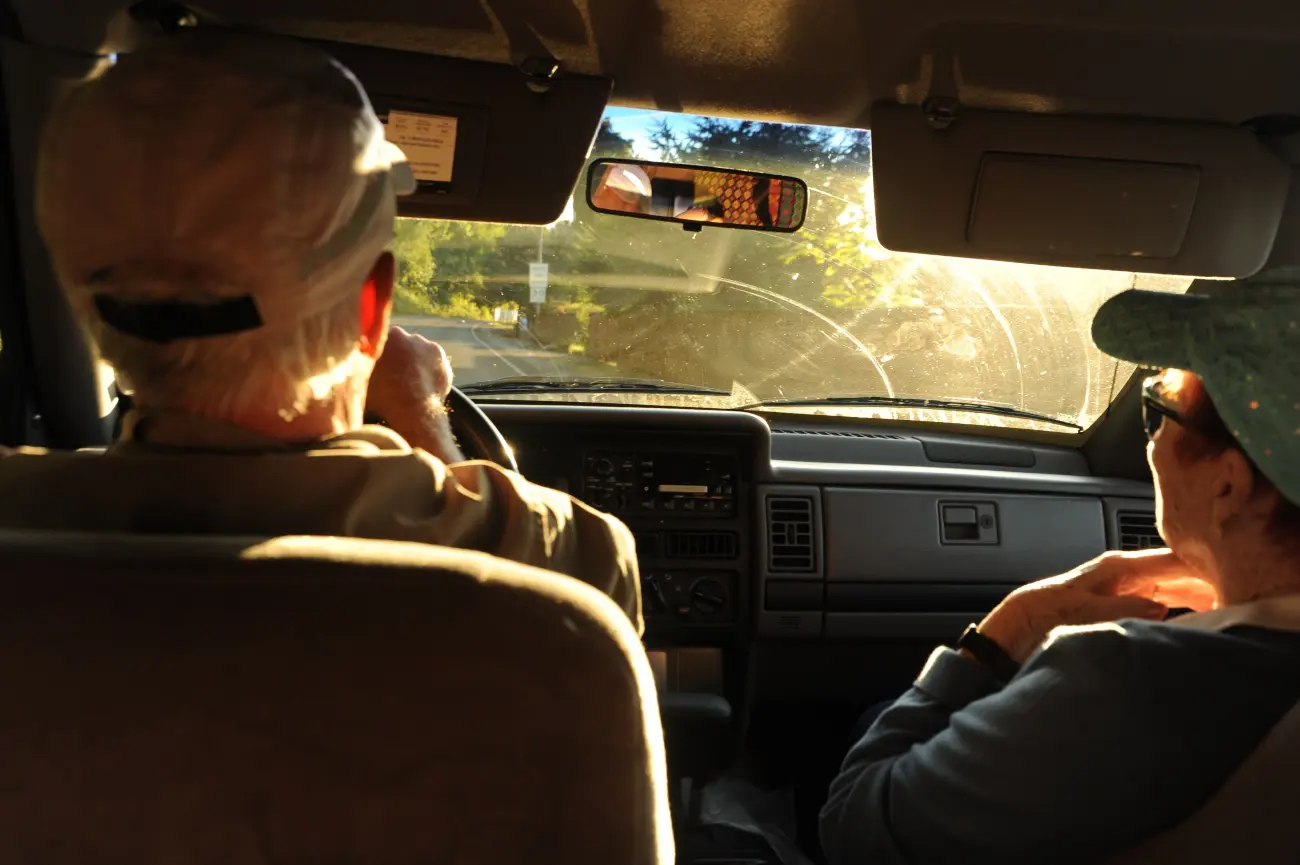Our favourite seven-seater classic cars
21 December 2021
There has always been a need to carry larger families around. During the 1960s, 1970s and 1980s, these mass-transport duties were carried out by big, sturdy estates, many of them French. Later, people carriers (or MPVs) entered the fray, joined more recently by a new generation of seven-seater SUVs.
The seven-seater family car has always been an interesting, if niche marketplace. (Among other things, it created a fascinating new debate: front or rear-facing seats in that third row?).
But which of these big, functional crowd carriers have now attained classic status? Here are 10 of our favourites. Some are now rarities. All will need some specialist classic car cover. That done, find six willing passengers – and away you go!

Citroen CX Familiale
When you think of the CX, Citroen's all-conquering '70s and '80s executive car, as likely as not it's the saloon (actually a hatchback) that comes to mind. Sleek, angular and with that unmistakable low profile, the CX was one of the most distinctive cars of its era. Like many a Citroen, if we're honest.
However, there was also an estate version of the CX, dubbed the 'Familiale': and, arguably, this was the complete package, adding practicality to those futuristic looks. Front wheel drive gave significant space savings, while self-levelling hydropneumatic suspension meant superb, cushioning comfort for all occupants. And those occupants could number as many as seven, thanks to the car's three rows of forward-facing seats.
The estate also spawned the fascinating, coachbuilt Loadrunner variant. Built by the French company Tissier, this elongated Familiale was retrofitted with a second pair of rear wheels, allowing it to carry some seriously bulky loads. It became popular for high-speed bulk transport – notably carrying newspapers across Europe.
Peugeot 504 Family Estate
The 504 helped cement Peugeot's reputation for building sturdy, well-built cars that would go on indefinitely. In both saloon and estate form, it was a chunky, sensible-looking thing that looked as if it ought to give drivers relatively few problems as the miles piled up. And that turned out to be pretty much the case for the 504's millions of devoted owners – famously, in one case, a saloon that notched up over a million kilometres.
The 504 Estate was perhaps particularly noteworthy (and lodged itself in the memories of many 1970s and 1980s children) thanks to one key optional feature: three rows of seats, in the Family Estate model. This load-lugger got a choice of 2.0- or 2.3-litre diesel engines to haul around its weighty loads.
As such, the Family Estate became something of a rival to the Citroen CX Familiale mentioned above – and, in the days before the Citroen / Peugeot merger in 1976, this was a meaningful rivalry. The Peugeot undercut the Citroen, typically costing around £500 less.
Peugeot continued the popular seven-seat option with the 504's successor, the similarly excellent 505. Even that car is now old enough to qualify for classic car insurance.
Austin Montego Estate
Hang on… British Leyland had a seven-seater estate on the market in the 1980s? Yes, we'd forgive you if you'd forgotten about this one.
The Austin Montego Estate was actually launched at the British Motor Show in October 1984, just six months after the saloon version. Actually, looking again at it now, we think it's possibly better looking than its (also handsome) four-door sibling. That large glass area and low waistline give it a smart, poised look, and would also have made it a pleasant place for the driver and up to six passengers as they thundered down the M5 towards their summer holiday.
Interestingly, and in contrast to the two seven-seaters we profiled so far, the Montego used a rear-facing third row. Quite nice for the kids to look out the back, we imagine. Just as long as said kids behaved themselves and didn't pull faces at the other drivers. At least they could tell you when the luggage was falling off!
Engine choices included 1.6- and 2.0-litre petrols, or (a slightly better option, we'd imagine, if all seven seats got regular use) a 2.0 turbo diesel.
Daimler DS420
OK, this one is technically eight seats, rather than seven, but we can't resist including it here as it's undoubtedly one of the most stylish supersize cars of the last half century.
Somehow managing to straddle that thin line between bulky and graceful, the majestic Daimler DS420 enjoyed an extraordinary 24-year production run from 1968 to 1992. That longevity is thanks to the far-flung and prestigious fanbase it won: as well as being popular with hoteliers, chauffeur services, and undertakers, and acting as mayoral transport for many a British town and city, the DS420 also found favour as a state car in many countries around the world. Indeed, royal families in Sweden, Denmark, Luxembourg and the UK still get around in their faithful DS420s.
For the first few years, each DS420 was finished off at the Vanden Plas works in London: after that, production was moved to Jaguar’s headquarters in Coventry (Daimler being a Jaguar subsidiary since 1960). Under the bonnet was Jaguar's revered and long-serving 4.2-litre straight-six, which also did service in the E-Type, XJ6 and many other iconic Jags. A top speed of 110mph was possible – although, given its mostly serene and statesmanlike duties, that figure was probably rarely reached.

Renault Espace Mk1
The remarkable Espace tore up the seven-seater rulebook. After all, at the time of its launch, your options – if you needed a seven-seater car – were limited to elongated estates like the Peugeot or Citroen above, or… a minibus. With the Espace, Renault dared to envisage something different. Or, should we say, Matra – as the latter company actually built the car, developing some of the designs from their own previous car, the remarkable Rancho soft-roader.
Renault marketed the car as one of their own – and must have been glad they did, as it was a huge success, both in terms of sales and of kicking off the full-size MPV market. Within a decade or so, the Espace template was being adapted by other big multi-passenger vehicles like the Ford Galaxy / VW Sharan / Seat Alhambra trinity (see below). Nothing looked as bold and brilliant as this original design, though.
In fact, sales were slowish to start with, with large families reluctant to move out of their tried and tested big estates – but when the Espace started to gain traction, it became a big seller. It's now fondly remembered as a game-changer in the large family car landscape.
Ford Galaxy / Volkswagen Sharan / SEAT Alhambra
Inspired by the eventual success of the Espace (above), Ford and VW Group joined forces in the late 1980s to design and produce their own seven-seater MPV. This partnership was significant in that it also involved the building of a brand new production plant, Portugal's Autoeuropa factory, specifically for the building of these new people carriers.
In fact, Europe got not two but three MPVs out of the deal: with SEAT now a VW subsidiary, the SEAT Alhambra joined the Ford Galaxy and VW Sharan in the big MPV triumvirate. Anything to distinguish them? Well, as has been the way ever since, the SEAT slightly undercut the VW in price, while also allowing more flexibility – for example, the completely flat floor that was produced by folding the two rearmost rows of seats.
Mercedes-Benz W123 Estate
The Mercedes W123, a progenitor of today's E-Class midsize executive, was a landmark car in many ways. It attained huge popularity, mostly in saloon form, as a reliable, bulletproof, mile-munching vehicle. For this reason, it was much loved by taxi drivers all around the world.
The decision by Mercedes to produce their first ever estate was an interesting one. After all, the marque enjoyed a prestigious reputation among drivers around the world. It was known for producing luxurious, opulent saloons – the format loved by high-flying businessmen, politicians and anyone else who liked to travel in style and didn't especially need the extra encumbrance of a large boot, with the rather more functional looks that that entailed.
But a Mercedes estate? It may have seemed an odd decision at the time, but in fact the estate version of the W123-series was a success almost from the moment of its launch in 1978. It seemed that there were indeed plenty of well-to-do families out there who wanted to transport children and kit around in a degree of luxury. To this day, you'll frequently see the W123 estate cited as the best estate car ever made.
What's more, Mercedes also spotted the trick being offered by established estate makers Peugeot, Citroen and Volvo (that optional third row) and adopted the format. That said, seven-seater versions were substantially less common than the normal five-seat guise – lending a seven-seater even greater classic status today. Make no mistake, a '7 up' W123 will be something special indeed. Classic car insurance will be a must.
Volvo 240 Estate
It's a much-loved fact, among its legions of admirers, that the iconic, boxy Volvo 240 outlasted the car that was intended to replace it. Yes, the 240's intended successor, the 740/760 pairing, was phased out in 1992, while the 240 itself soldiered on for a year longer.
So, what produced this extraordinary longevity? Well, mostly the fact that the 240 – and basically we're talking about the estate here – was incredibly practical, durable and, famously, safe. For thousands of families across Europe and beyond who wanted to get around with the utmost ease and in the utmost safety (and do so for tens of thousands of stress-free miles), the Volvo 240 was the answer.
And, of course, if your family was on the larger side, you needed the seven-seat version. This was an optional extra on the estate, which gave you a foldable, rear-facing jumpseat at the back of the car. This back row came with three-point seat belts, and – safety first, this was Volvo after all – a reinforced floor section that would protect the back-seat occupants in the event of a rear-end shunt.
Nissan Prairie
We talk about the Renault Espace as the founding father of the MPV – but in reality we should look back a little further, to the Nissan Prairie of 1981 (and maybe even further back than that, to the short-lived but influential Lancia Megagamma of 1978 – but that's another story).
That first-generation Prairie introduced a fair few MPV-style innovations. For example, there was no B-pillar between the front and rear doors. So, how did the doors fix to the sides of the car? Well, the interlocking front and sliding rear doors locked onto the car's roof and floor.
Passengers could also slide the front seats all the way to the front, and fully recline them, when they needed to catch forty winks on the road. The rear seats could be folded away – or reclined alongside the front seats to create a double bed. And, of interest to us here, there was even the option of a third, front-facing row of seats. Forward-looking stuff.

Citroen DS Station Wagon
We've saved the best until last. Yes, the Citroen DS, that sublime feat of automotive design, one of the most beautiful cars from an era of concentrated beauty (E-Type, Miura, Gullwing, etc) actually went and did something practical, too. Yes, if you wanted the eye-catching looks of a DS (well, most of them) but needed some major people-carrying capacity, you could get a station wagon variant with two side-facing seats in the boot.
We're trying to imagine the target market here, and we're imagining large, funky young families from 1960s and 1970s Paris and London. We reckon the interior of a DS Station Wagon at this time would have been a noisy, creative and exciting place to be.
Rarity value… and classic car insurance to match
As we've noted, seven seats were often a minority option on a classic 1970s estate. That means that, today, these seven-seaters will be even more prized than their five-seat siblings. As such, any of these big, comfy people carriers will now need protecting with some dedicated insurance for your classic car.
Here at Lancaster, we have experience in providing classic car insurance for a vast range of vehicles, so it's unlikely that even a rare seven-seater will be too niche for us. Of course, if your classic is something a little less leftfield, we'll be just as proud to insure it for you.
Contact us to get a quote for your classic today.
